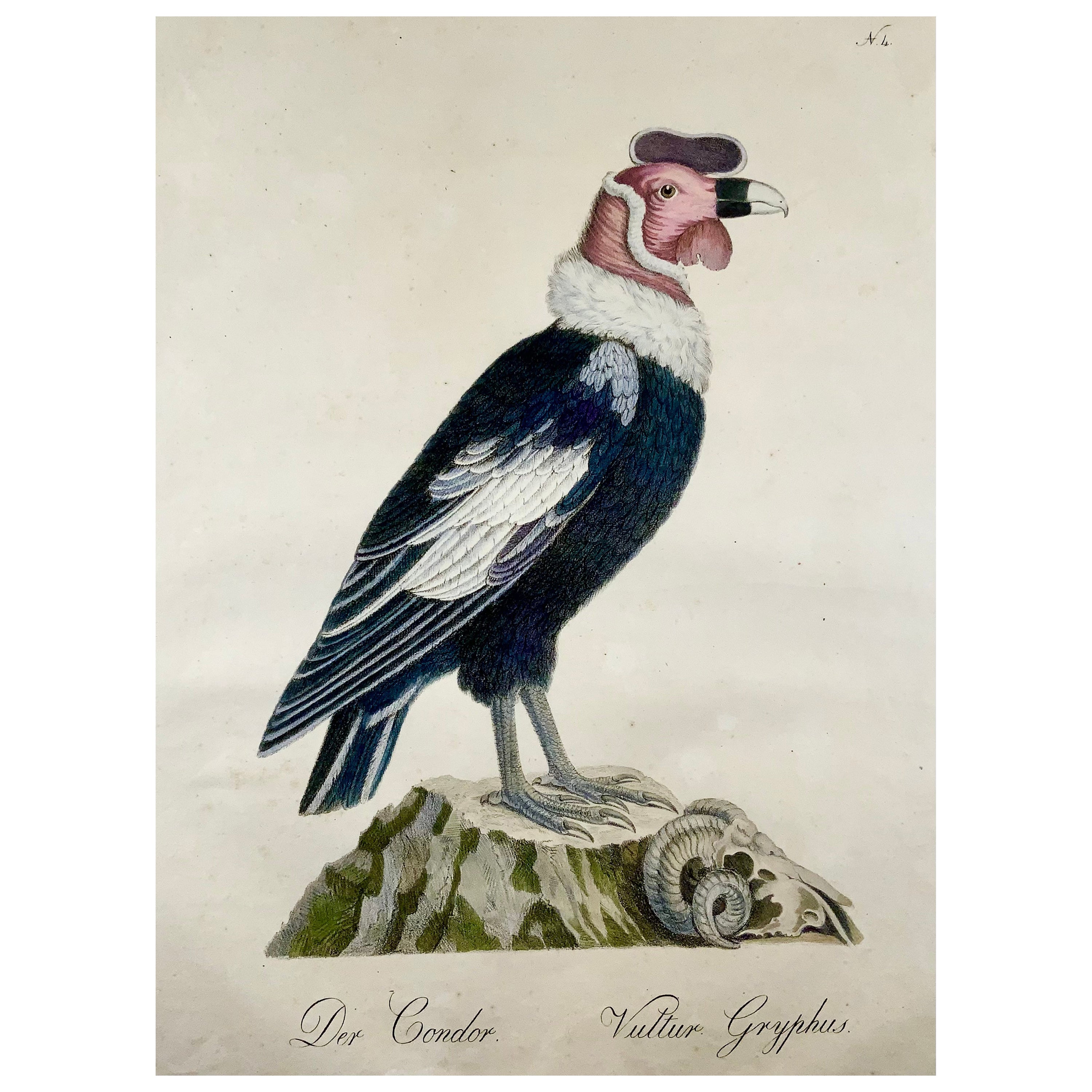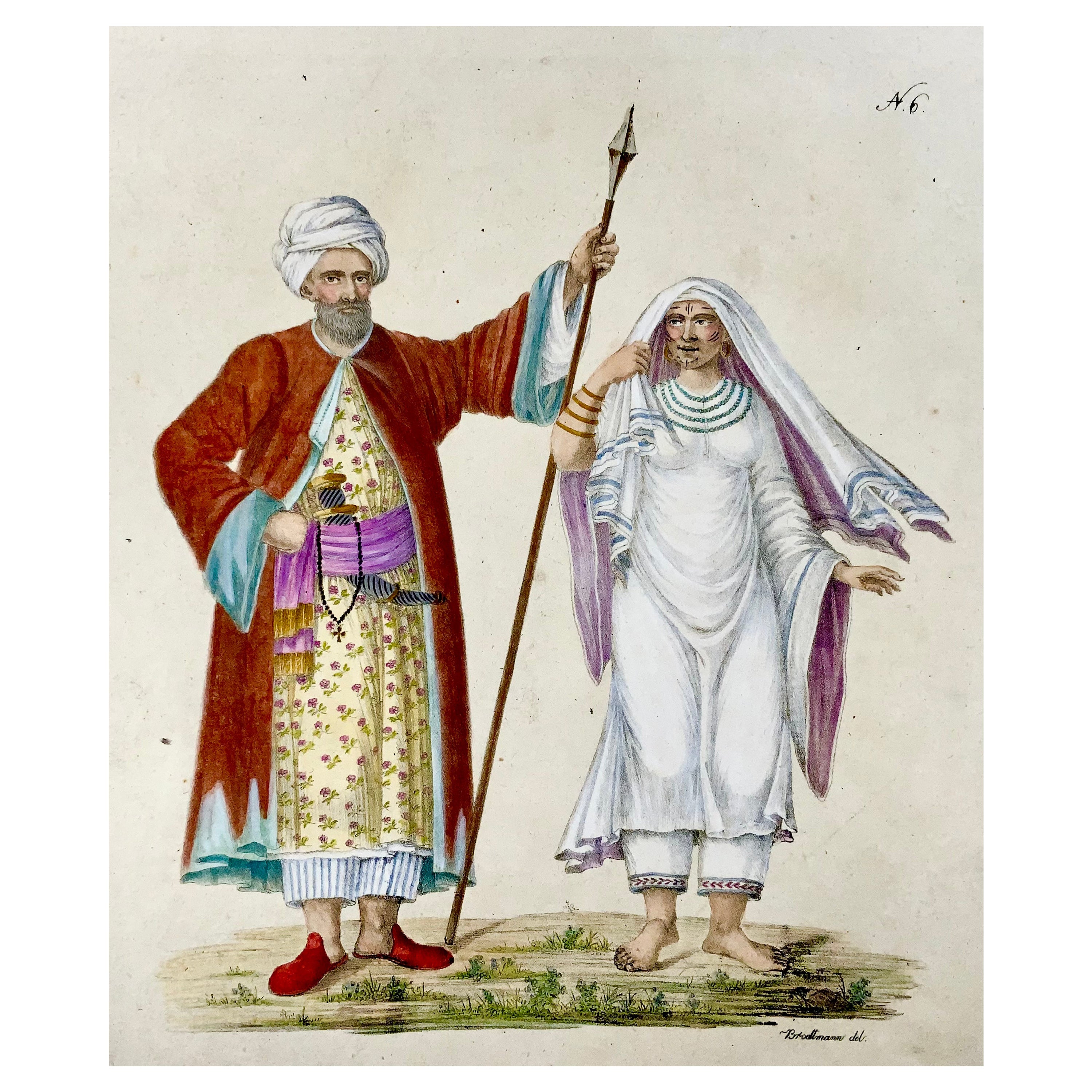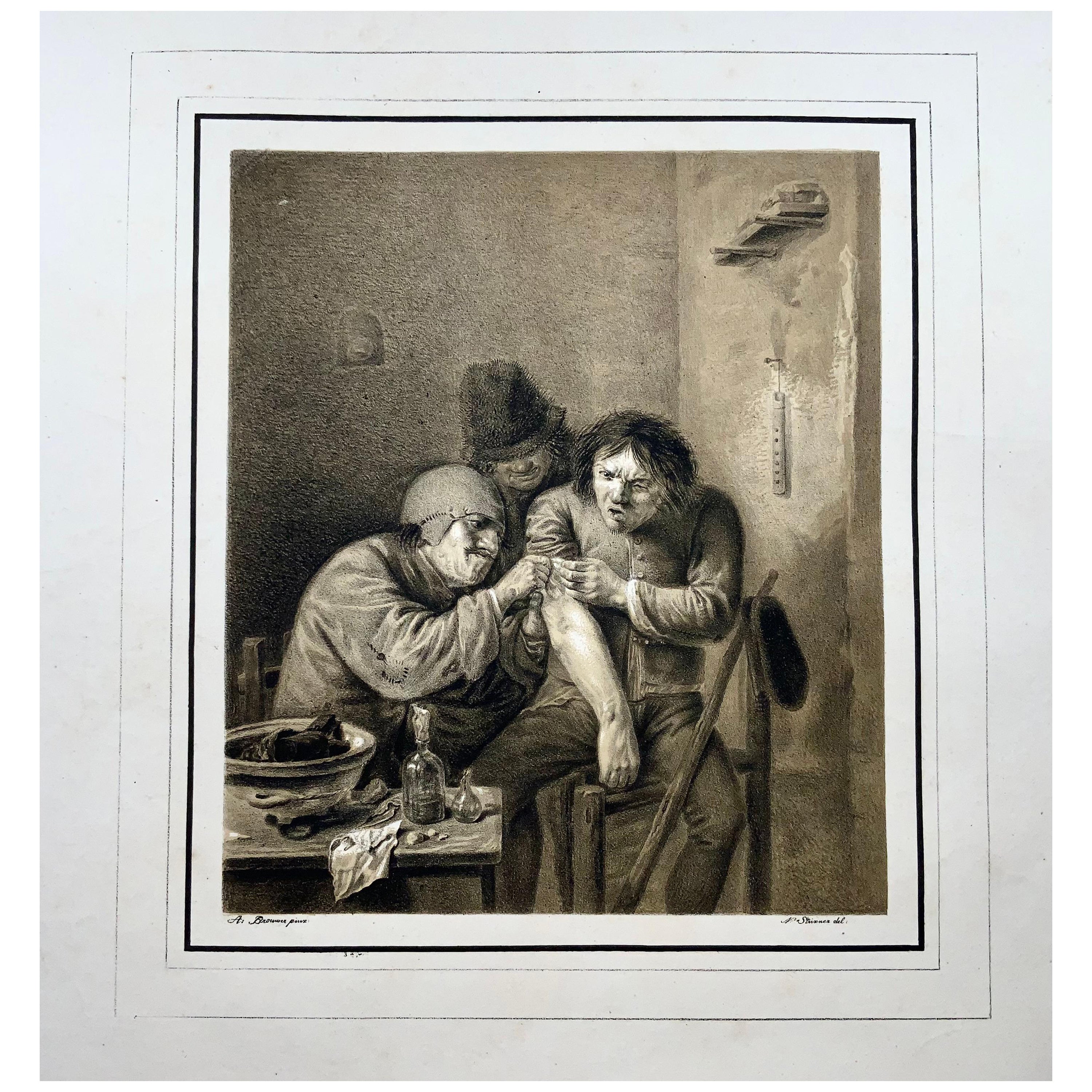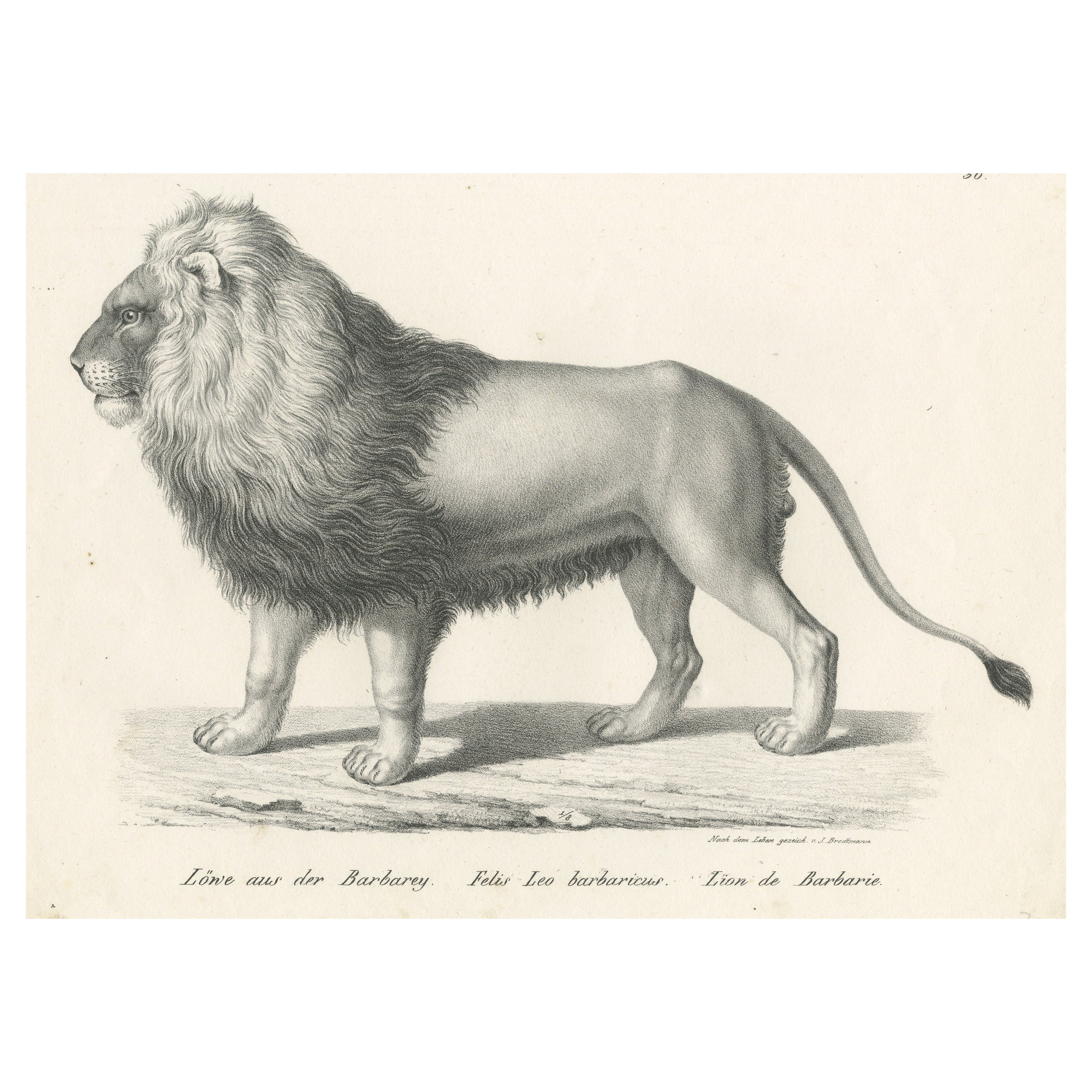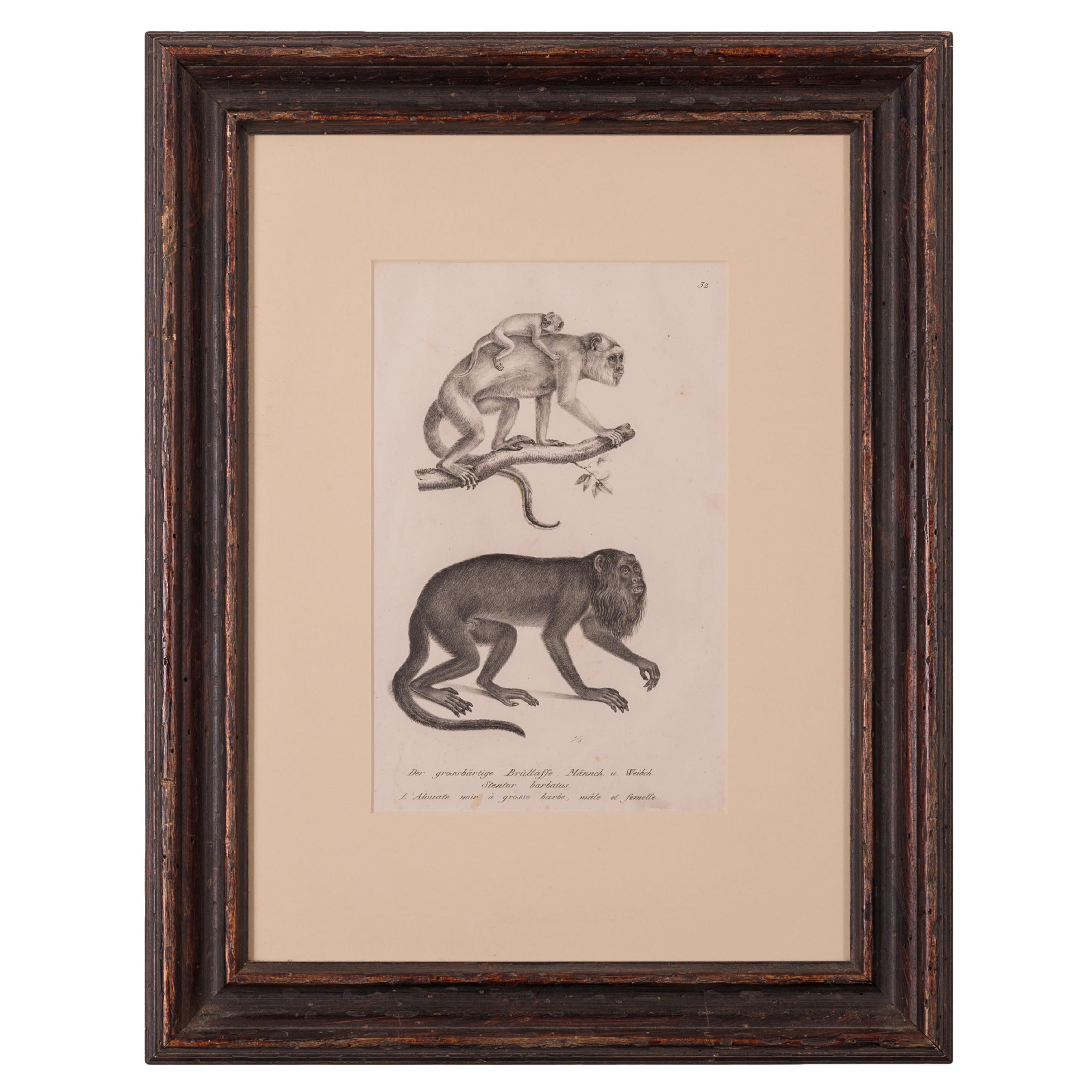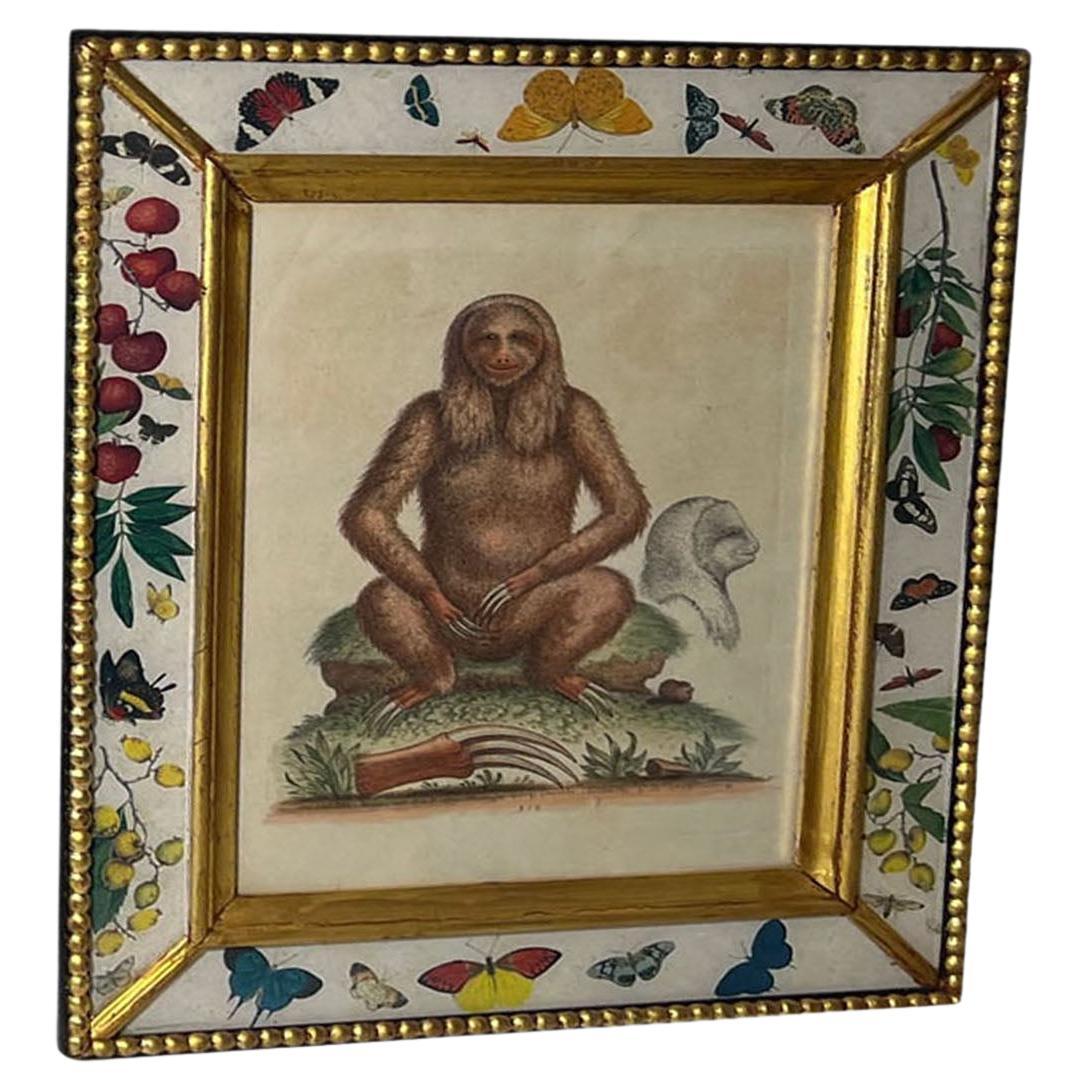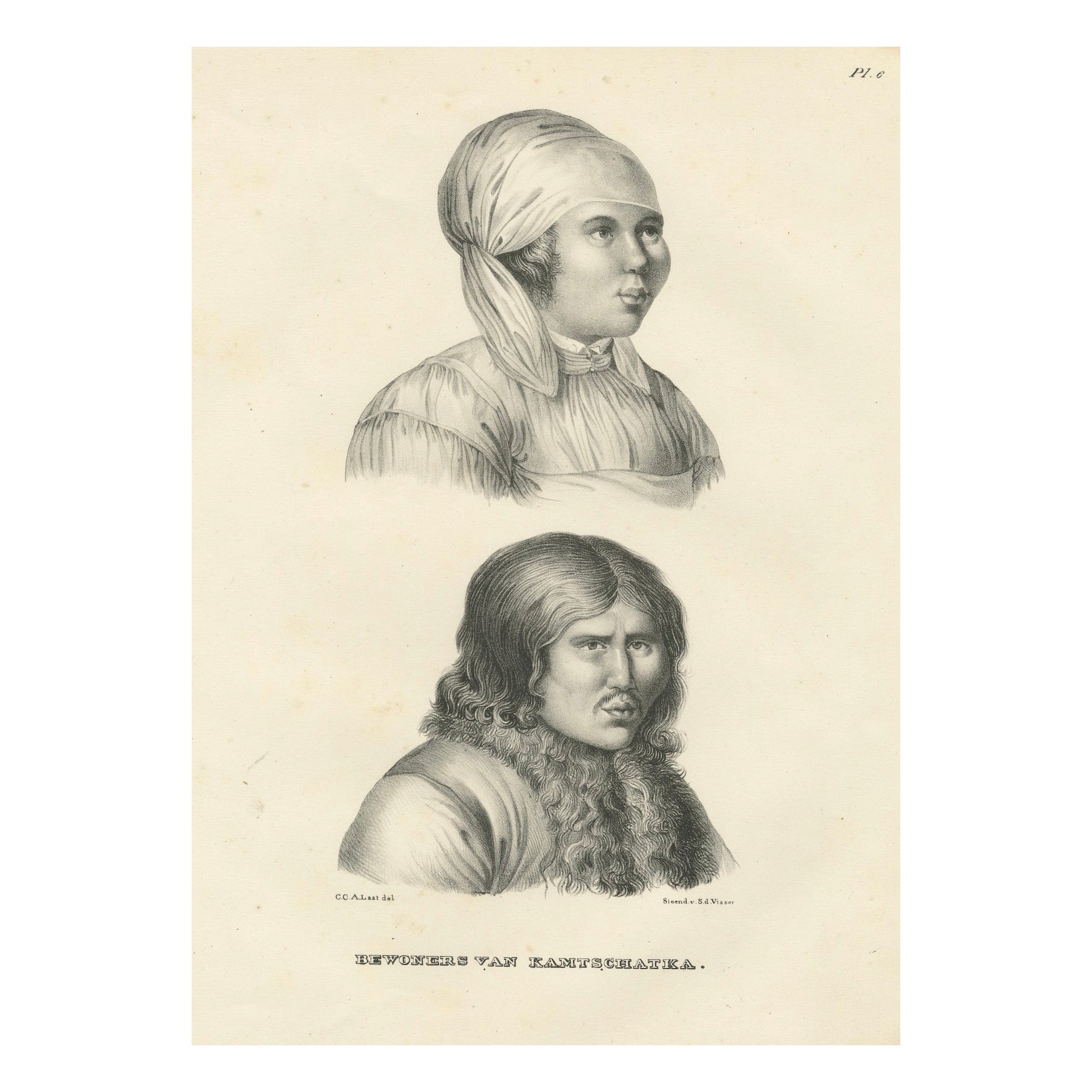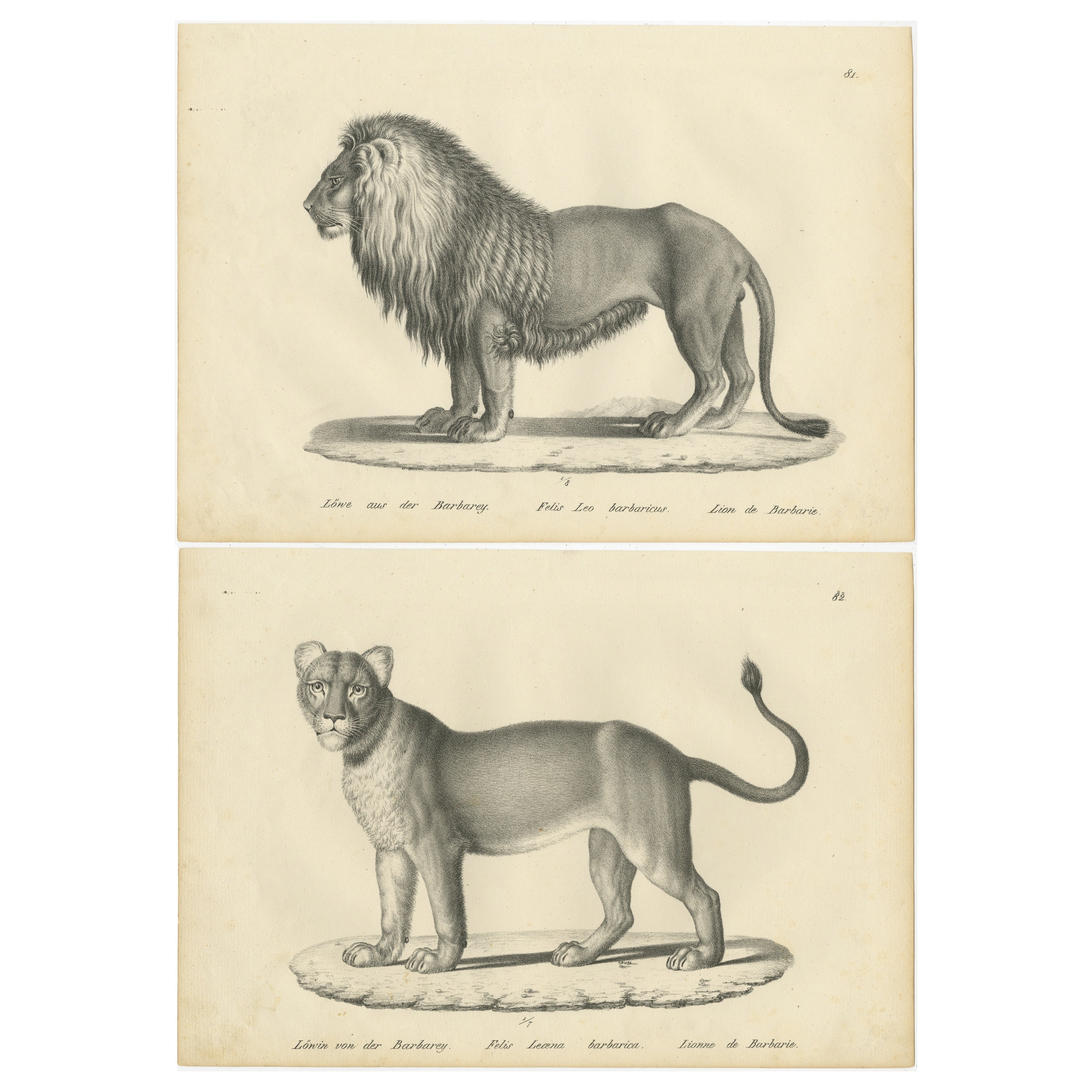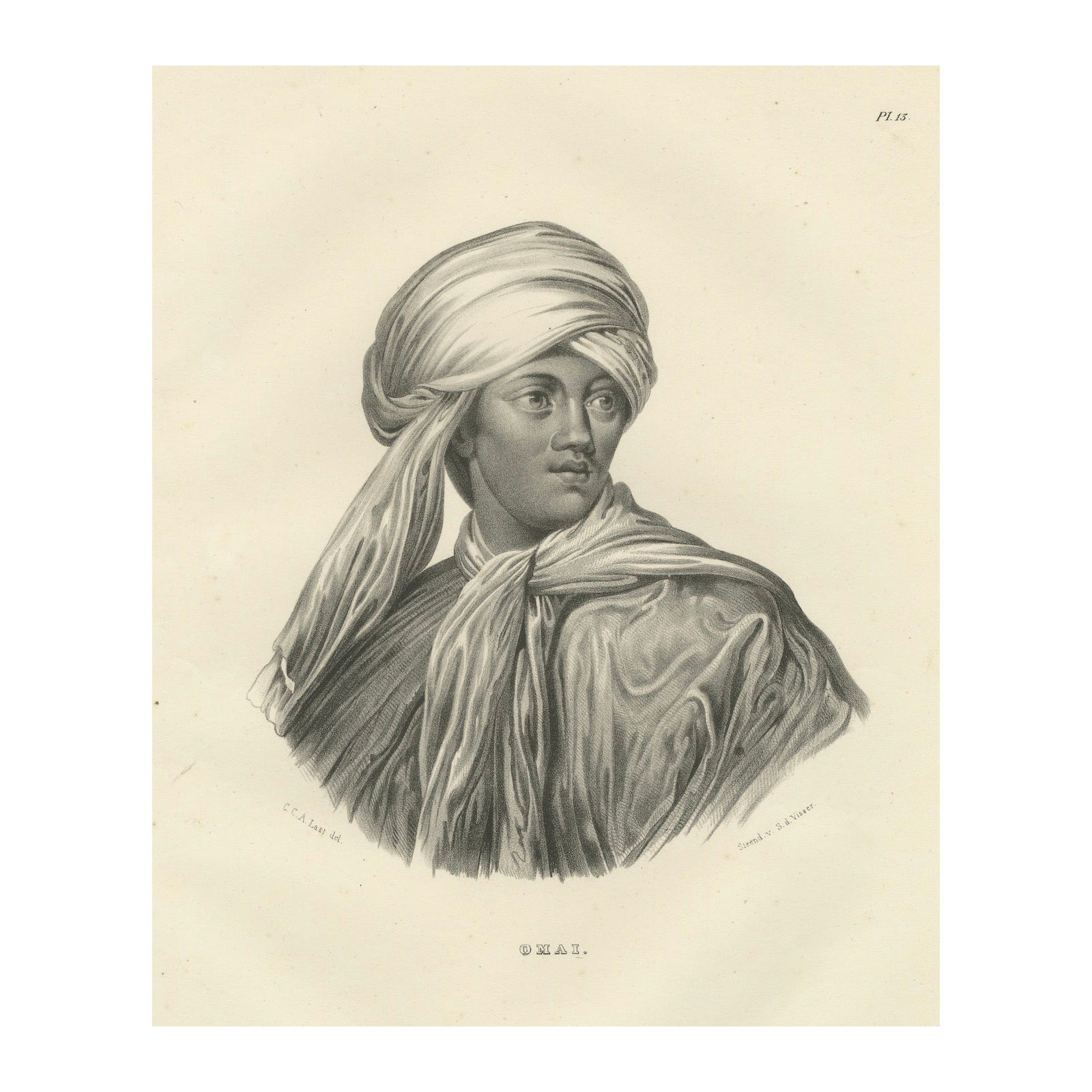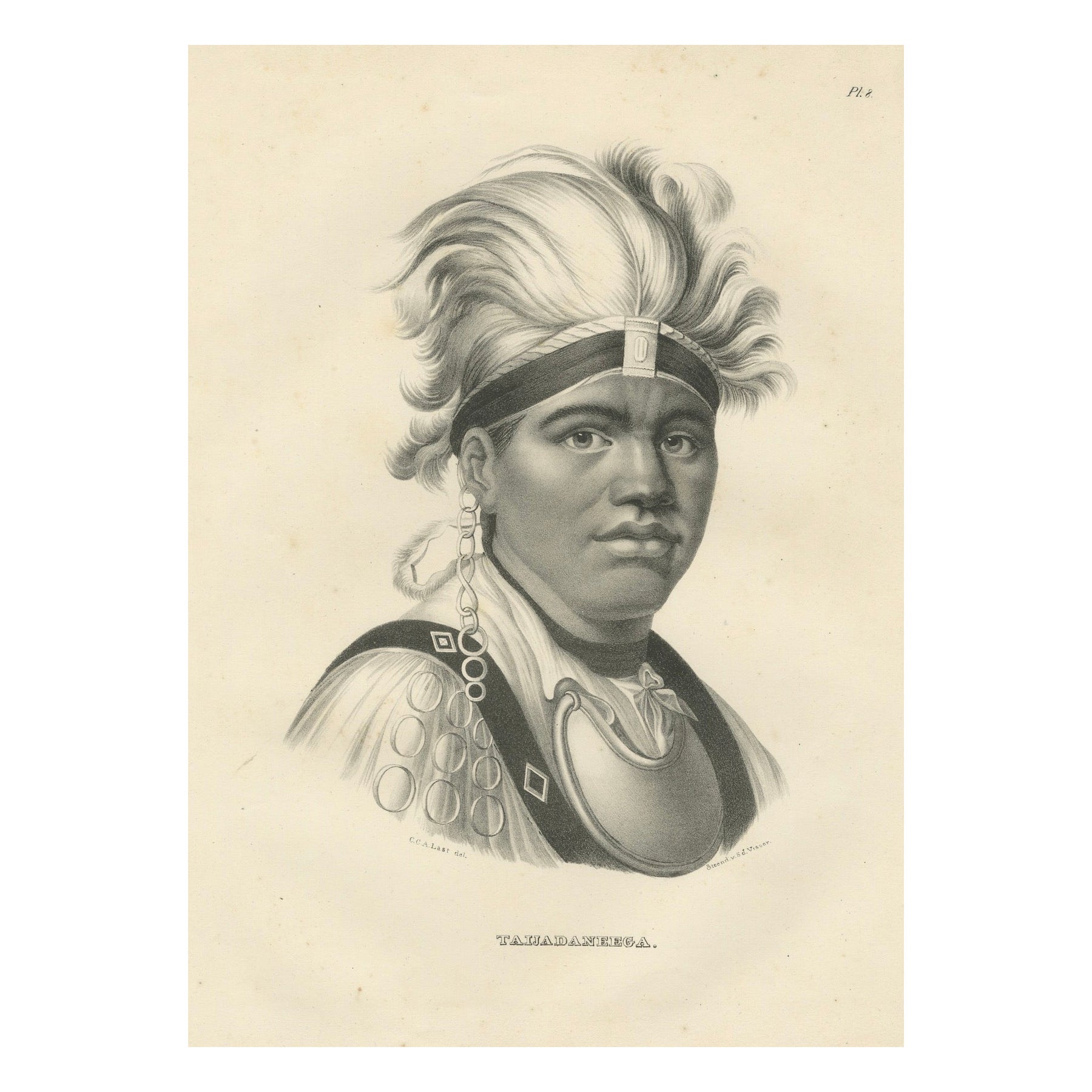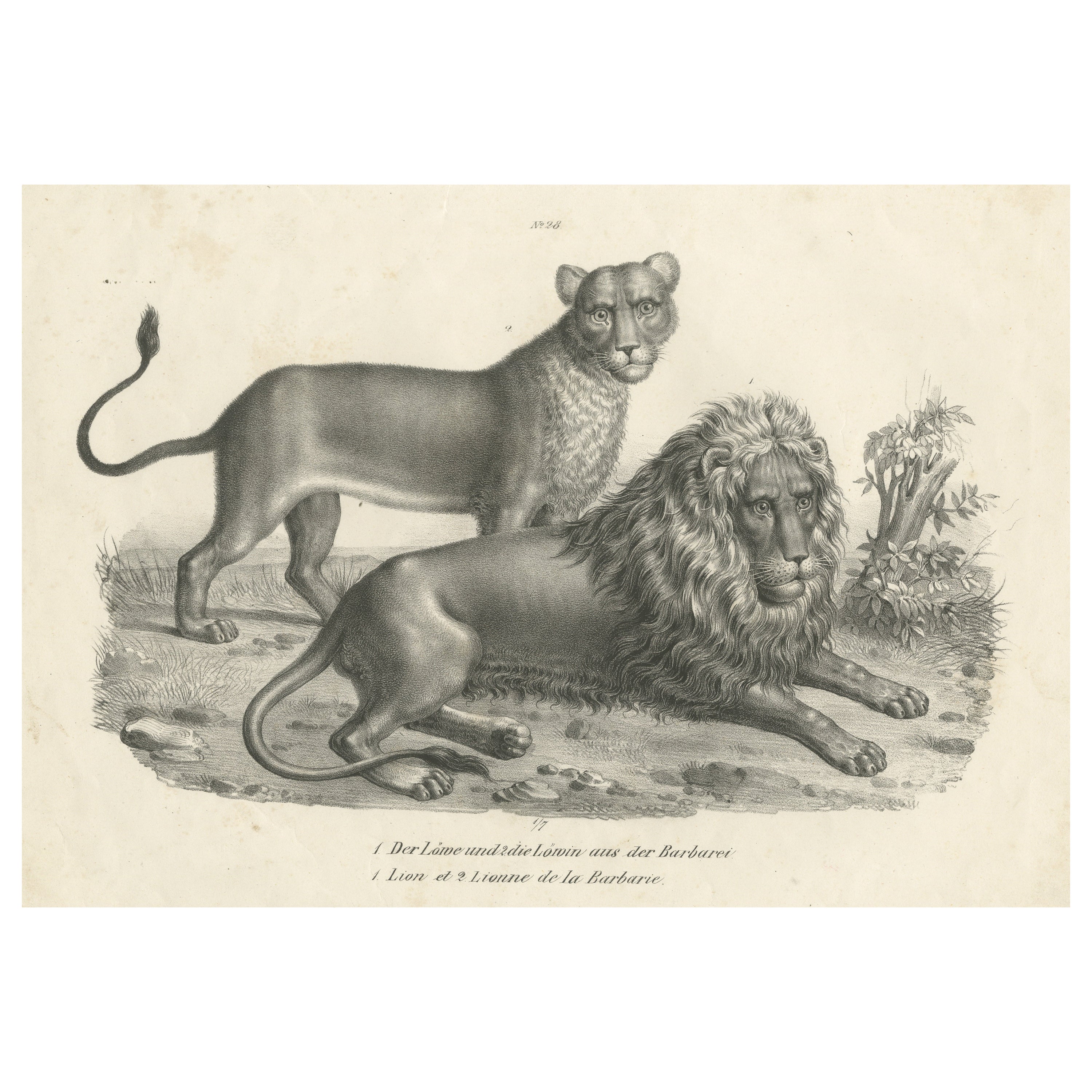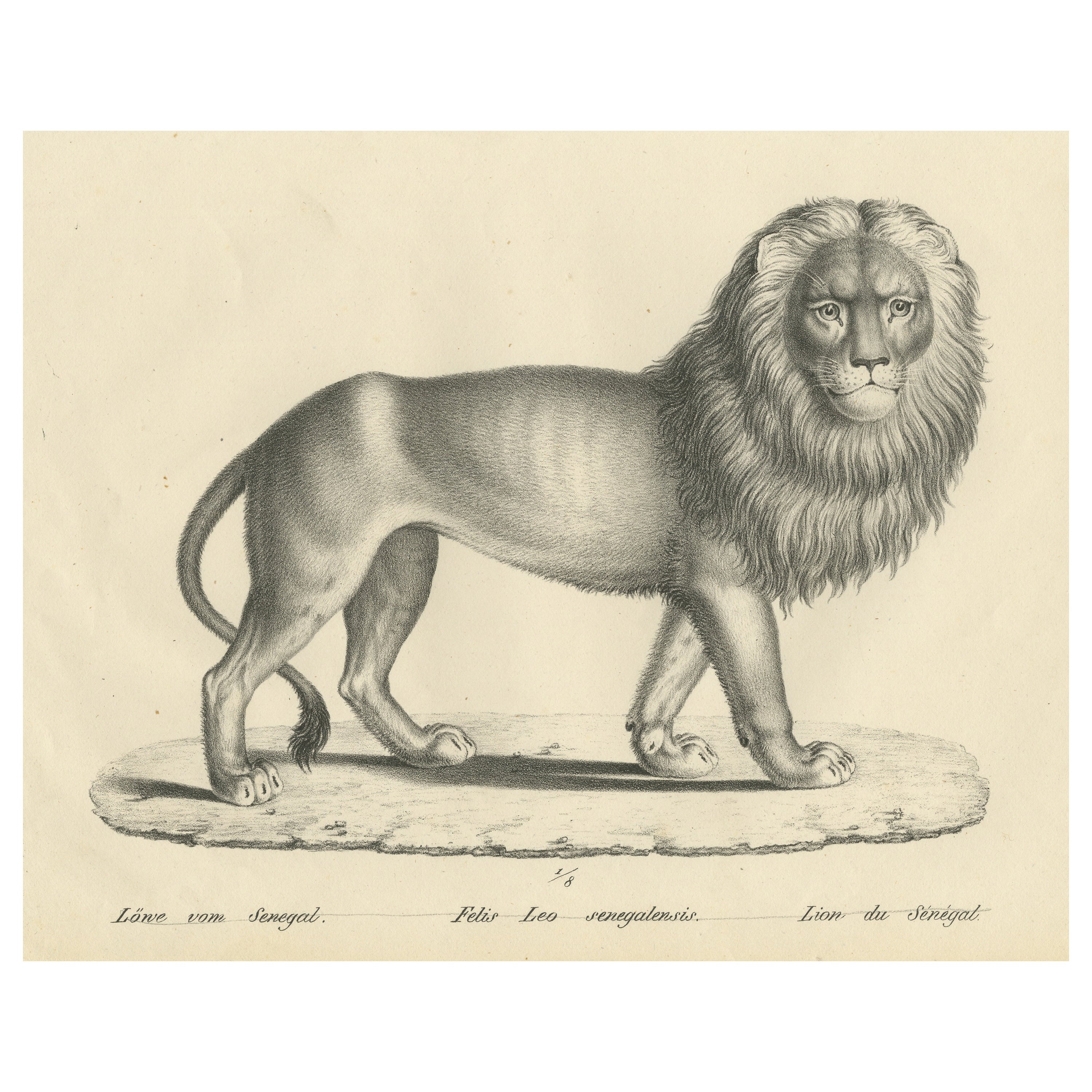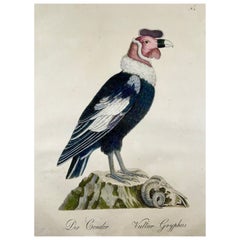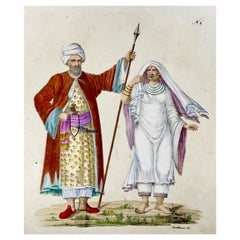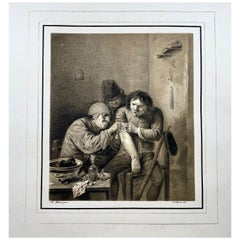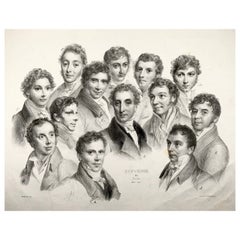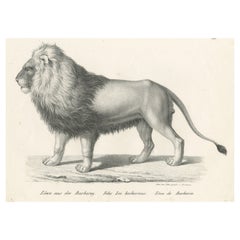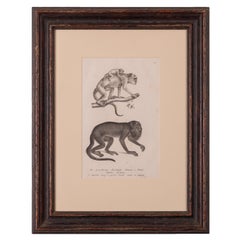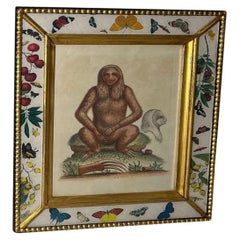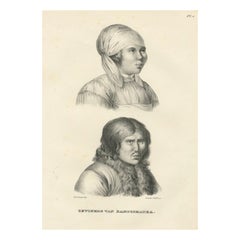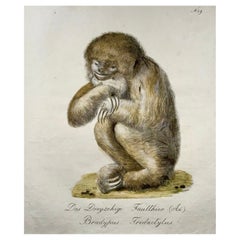
1816 Sloth, Brodtmann, Imp. Folio, Incunabula of Lithography
View Similar Items
Want more images or videos?
Request additional images or videos from the seller
1 of 6
1816 Sloth, Brodtmann, Imp. Folio, Incunabula of Lithography
About the Item
- Creator:Brodtmann, K.J.A. (Artist)
- Dimensions:Height: 16.74 in (42.5 cm)Width: 12.8 in (32.5 cm)Depth: 0.04 in (1 mm)
- Style:Georgian (Of the Period)
- Materials and Techniques:
- Place of Origin:
- Period:
- Date of Manufacture:1816
- Condition:Wear consistent with age and use. As this was produced from a stone lithograph, items from this first imperial folio edition are rarely found in good condition has here.
- Seller Location:Norwich, GB
- Reference Number:1stDibs: LU7031232937562
About the Seller
No Reviews Yet
Vetted Professional Seller
Every seller passes strict standards for authenticity and reliability
Established in 1992
1stDibs seller since 2022
10 sales on 1stDibs
Authenticity Guarantee
In the unlikely event there’s an issue with an item’s authenticity, contact us within 1 year for a full refund. DetailsMoney-Back Guarantee
If your item is not as described, is damaged in transit, or does not arrive, contact us within 7 days for a full refund. Details24-Hour Cancellation
You have a 24-hour grace period in which to reconsider your purchase, with no questions asked.Vetted Professional Sellers
Our world-class sellers must adhere to strict standards for service and quality, maintaining the integrity of our listings.Price-Match Guarantee
If you find that a seller listed the same item for a lower price elsewhere, we’ll match it.Trusted Global Delivery
Our best-in-class carrier network provides specialized shipping options worldwide, including custom delivery.More From This Seller
View All1816 CONDOR - K. Jos. Brodtmann - Imp. folio 42.5 cm 'Incunabula of Lithography'
By Brodtmann, K.J.A.
Located in Norwich, GB
Landmark stone lithograph on fine Ziegler watermarked paper.
Extremely rare.
Antique hand colored stone lithograph by Carl Joseph Brodtmann from his extremely rare series:
Naturhi...
Category
Antique 1810s Swiss Georgian Prints
Materials
Paper
1816, Arabs, Ethnology, Imperial Folio, Huge Early Stone Lithograph
By Brodtmann, K.J.A.
Located in Norwich, GB
Landmark stone lithograph. Measures: 41.5 cm.
Extremely rare.
1816 antique hand colored stone lithograph by Carl Joseph Brodtmann from his extremely rare series:
From the scarce large format issue of 1816: 42, 5 x 32, 5 cm.
Naturhistorische Bilder Gallerie aus dem Thierreiche
Lindau, Brodtmann [1816].
Here in hand colour.
Measures: 37.5 x 47.5 cm.
Superb plate from this famed ‘incunabula of lithography’.
Reference Winkler 105.
Brodtmann is considered a pioneer in the art of lithography employing techniques for "texture" that are quite similar to that of an aquatint. He produced his lithographs in the post-Linnaean "'Age of Enlightenment" as books illustrations and sets of natural history prints, as Naturhistorische Bilder Gallerie aus dem Thierreiche, with the more expensive sets being hand coloured. Natural history specimens...
Category
Antique 1810s Swiss Prints
Materials
Paper
1810c Medicine, Surgeon, N. Strixner after A. Brouwer, incunabula of lithography
Located in Norwich, GB
A. Brouwer pinx. N. Strixner del.
Village Surgeon (The Feeling)
A surgeon dressing the wound of a grimacing patient.
61 x 45 cm; Image: 29.3 x 26.3 cm
Published c 1810
Stone lit...
Category
Antique 1810s German Neoclassical Prints
Materials
Paper
1822 Rullmann del, Engelmann lith, Souvenir of Swiss Lithographers Artists Paris
By Brodtmann, K.J.A.
Located in Norwich, GB
Exceeding rare and important lithograph for the history of Swiss lithography.
Engelmann, G. (Godefroy), 1788-1839, lithographer; after Rullmann, Ludwig, 1765-1822, artist
Souvenir ...
Category
Antique 1820s Swiss Georgian Prints
Materials
Paper
Folio Portraits of Artists, Puligo, Fiesole, Rossi, Gallo, Cosimo
By Giovanni Battista Falda
Located in Norwich, GB
Fine folio including early and finely executed portraits of Renaissance artists by Joachim von Sandrart.
Included are portraits of:
Mino da Fiesole;
Giuliano da Sangallo;
Domenico Puligo;
Andrea da Fiesole, and
Properzia de' Rossi.
The latter is of particular historical significance in that Properzia de' Rossi (c. 1490 Bologna – 1530 Bologna) was a ground-breaking female Italian Renaissance sculptor, the only woman to receive a biography in Vasari's Lives of the Artists. According to Vasari, she taught herself to carve by working with peach-stones. At the end of her life, she was sought out by the Pope Clement VII, who unfortunately found her dead.
Sometimes referred to as the “German Vasari,” Joachim von Sandrart, born in Frankfurt, trained first as a printmaker, notably in Nuremberg, and in Prague with Aegidius Sadeler. He then studied painting from 1625 on, originally in the studio of Gerrit van Honthorst...
Category
Antique 1670s Italian Baroque Prints
Materials
Paper
Folio portraits of artists, Carravagiom Raphael, Sarto, Penni et al.
By Giovanni Battista Falda
Located in Norwich, GB
Fine folio including early and finely executed portraits of Renaissance artists by Joachim von Sandrart.
Included are portraits of:
Antonio da Correggio;
Rosso Fiorentino;
Gianfrancesco Penni;
Polidoro da Caravaggio...
Category
Antique 1670s Italian Baroque Prints
Materials
Paper
You May Also Like
Original Antique Print of a Barbary Lion by Brodtmann
Located in Langweer, NL
Original antique print titled 'Löwe aus der Barbarey (..)'. Old print of a Barbary lion. Published by Karl Joseph Brodtmann, circa 1830.
Category
Antique Mid-19th Century Prints
Materials
Paper
Brodtmann Howler Monkey Lithograph, 1827
Located in Savannah, GA
Karl Joseph Brodtmann
(Swiss, 1787-1862)
Black howler, Alouatta caraya (Stentor barbatus), male and female.
Lithograph from Heinrich Rudolf Schinz's Illustrated Natural History o...
Category
Antique 1820s Swiss Prints
Materials
Glass, Wood, Paper
Sloth Engraving Circa 1758
Located in Dallas, TX
An antique engraving of a monkey called Sloth dated 1758 signed Edward Delin Anno. In a newer eglomise and guided wood frame with fruits, leaves and insects.
Category
Antique 1750s English Prints
Materials
Paper
Portraits of Inhabitants of Kamchatka by Karl Joseph Brodtmann, 1836
Located in Langweer, NL
This lithograph, attributed to Karl Joseph Brodtmann, is an example of his ethnographic work, from the 1835 series. It features two individuals labeled as "Bewoners van Kamtschatka" (Inhabitants of Kamchatka), representing the indigenous people of the Kamchatka Peninsula in Russia’s far east.
Description: This lithograph depicts two portraits, a woman and a man, identified as residents of Kamchatka, a remote and rugged region in the Russian Far East, inhabited by various indigenous groups, including the Koryaks, Itelmens, and Chukchi.
1. The woman (top) wears a traditional headscarf and a loose-fitting, gathered top...
Category
Antique 1830s Prints
Materials
Paper
Set of 2 Antique Prints of a Barbary Lion and Lioness by Brodtmann
Located in Langweer, NL
Set of two original antique prints titled 'Löwe aus der Barabarey (..) Löwin von der Barbarey'. Prints of a Barbary Lion and Lioness. Published by Karl Jo...
Category
Antique Mid-19th Century Prints
Materials
Paper
Portrait of Omai, a Polynesian Man, by Karl Joseph Brodtmann, 1835
Located in Langweer, NL
This lithograph, titled Omai, by Karl Joseph Brodtmann, is an example of the artist’s ethnographic studies, showcasing a portrait of Omai, a notable figure from Polynesia who visited Europe in the 18th century. This work highlights Brodtmann’s interest in portraying individuals from distant lands, focusing on their unique cultural attire and expressions.
Description:
The portrait represents Omai, a Polynesian man who gained historical significance during the 18th century as one of the first Polynesians to travel to Europe. Omai (also known as Mai) was a central figure in the encounters between Polynesian and European cultures, having been brought to England by Captain James Cook in the 1770s.
- Clothing: Omai is depicted in an elegant wrap of flowing fabric, draped around his shoulders and tied in a loose, elegant fashion. His head is adorned with a large turban, a stylistic interpretation that may have been influenced by European artistic conventions when portraying foreign dignitaries or exotic figures. The fabric's folds and shading add a sense of depth and texture, showcasing Brodtmann’s mastery of lithography.
- Expression: Omai’s expression is poised and dignified, with his gaze directed slightly off to the side. The sense of serenity and composure in his face is typical of the European portrayals of him as an "exotic noble savage," a term that reflects the European fascination with non-Western peoples during the age of exploration.
The lithograph highlights both the individuality of Omai and the cultural significance of his travels to Europe, where he became a symbol of cross-cultural exchange and curiosity during the 18th century.
Maker:
Karl Joseph Brodtmann (1787–1862), the Swiss lithographer, was known for his detailed illustrations of people from various cultures, natural history subjects, and scientific studies. His ethnographic works were part of a broader effort in 19th-century Europe to document the physical and cultural characteristics of peoples encountered through exploration. Brodtmann’s portraits often struck a balance between realism and the romanticized European views of non-Western cultures.
Technique and Style:
Brodtmann created this portrait using lithography, a technique that allowed him to achieve fine details and subtle gradations of light and shadow. His style in this portrait combines realism with the romanticized ideal of the "exotic," particularly in the way Omai is dressed in flowing garments, which may not be entirely representative of traditional Polynesian dress...
Category
Antique 1830s Prints
Materials
Paper
